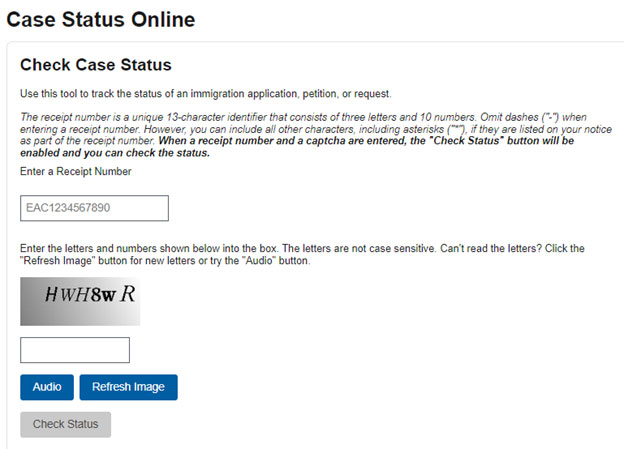Are you planning to sponsor a family member for immigration to the United States? If so, understanding Form I-130 is essential. This crucial immigration form serves as the initial step in the family-based immigration process. In this blog, we will explore a comprehensive overview of Form I-130, outlining its purpose, eligibility requirements, necessary documentation, filing procedures, processing times, and more.
What is Form I-130?
The primary aim of Form I-130 is to formally request the U.S. Citizenship and Immigration Services (USCIS) to acknowledge the relationship between a U.S. citizen or lawful permanent resident and their foreign relative who seeks to immigrate to the United States. By submitting this form, the petitioner begins the process that allows the foreign relative to eventually apply for an immigrant visa or adjustment of status.
It’s a critical document that lays the groundwork for family-based immigration, establishing the legitimacy of the relationship as outlined by USCIS guidelines.
Who Is Eligible to File Form I-130?
Eligibility to file Form I-130 is based on the relationship between the petitioner and the beneficiary. U.S. citizens can file for their spouse, children (unmarried and under 21), unmarried sons or daughters (21 or older), married sons or daughters of any age, siblings (if the petitioner is 21 or older), and parents (if the petitioner is 21 or older).
Lawful permanent residents can file for their spouse, unmarried children under 21, and unmarried sons or daughters 21 or older. You need to submit necessary documents to prove these relationships and meet USCIS criteria.
Required Documents for Form I-130
You must have a range of supporting documents to establish the authenticity of the relationship between the petitioner and the beneficiary while applying for form I-130. You must have-
- Evidence of U.S. citizenship, lawful permanent residence, or U.S. national status
You can show this by showing any of the following documents:
- A copy of your birth certificate, issued by a civil registrar, vital statistics office, or other civil authority showing you were born in the United States;
- A copy of your naturalization or citizenship certificate issued by USCIS or the former Immigration and Naturalization Service (INS);
- A copy of Form FS-240, Consular Report of Birth Abroad (CRBA), issued by a U.S. Embassy or U.S. Consulate;
- A copy of your unexpired U.S. passport;
- An original statement from a U.S. consular officer verifying you are a U.S. citizen with a valid passport; or
- A copy of the front and back of your Permanent Resident Card (also known as a Green Card or a Form I-551).
- Evidence of family relationship with 1 of the following
You can show this by showing any of the following documents:
- Spouse: A copy of your marriage certificate
- Evidence you or your spouse terminated any prior marriages (if applicable)
- Child: A copy of your child’s birth certificate(s).
- Parent: A copy of your birth certificate.
- Brother/Sister: A copy of the birth certificate for you and your sibling.
- Evidence of the bona fides of the marriage, if petitioning for a spouse:
You can show this by showing any of the following documents:
- Documentation showing joint ownership of property;
- A lease showing joint tenancy of a common residence, meaning you both live at the same address together;
- Documentation showing that you and your spouse have combined your financial resources;
- Birth certificates of children born to you and your spouse together
You must ensure that all documents are properly organized and accompanied by accurate translations if they are not in English. This approach strengthens the petition and minimizes the likelihood of receiving requests for additional evidence from USCIS.
Step-by-Step Filing Process for Form I-130
First, download the latest version of Form I-130 from the USCIS website and thoroughly read the instructions provided.
Fill out the form accurately, making sure all details are correct and align with your supporting documents.
Next, compile all the required documents, such as birth certificates, marriage certificates, and proof of U.S. citizenship or lawful permanent residency, as well as any additional evidence that may be necessary based on your specific situation.
Include the appropriate filing fee in the form of a check or money order payable to the U.S. Department of Homeland Security.
Ensure you are sending your petition to the correct USCIS address based on your location and the residence of the beneficiary. It’s important to double-check that your package is complete and organized to avoid any processing delays.
Once submitted, USCIS will send a receipt notice, acknowledging the acceptance of your petition, which will contain a unique receipt number for tracking your case status online.
Processing Times and What to Expect After Filing
Processing times for Form I-130 can vary significantly, depending on factors such as the nature of the relationship and the current USCIS workload. Petitions filed by U.S. citizens for immediate relatives, such as spouses, parents, and unmarried children under 21, typically receive faster processing compared to those filed by lawful permanent residents.
Upon filing, USCIS will issue a receipt notice with a unique tracking number, which you can use to monitor your case status online.

The review process includes verifying the information provided and assessing the submitted documentation. If additional evidence is required, USCIS will issue a Request for Evidence (RFE), which can extend processing times.
Once approved, if the beneficiary is outside the U.S., the case will move to the National Visa Center (NVC) for consular processing. For beneficiaries within the U.S., the case will proceed with adjustment of status. It’s important to stay informed about current processing times by regularly checking the USCIS website and keeping a close watch on any updates regarding your petition.
Summing Up!
Form I-130 serves as a vital gateway for family-based immigration to the United States. By understanding its purpose, eligibility requirements, and necessary documentation, you can better navigate the complexities of the application process. Proper preparation, organization, and attention to detail are essential to minimize the likelihood of delays or rejections.
It is recommended to seek help from experienced immigration attorneys to ensure your form is correctly filled with required documents. You can get in touch with immigration attorneys easily through our Imagility platform who have 30 + experience in handling family based petitions. You can reach out to us at sales@imagility.co.









